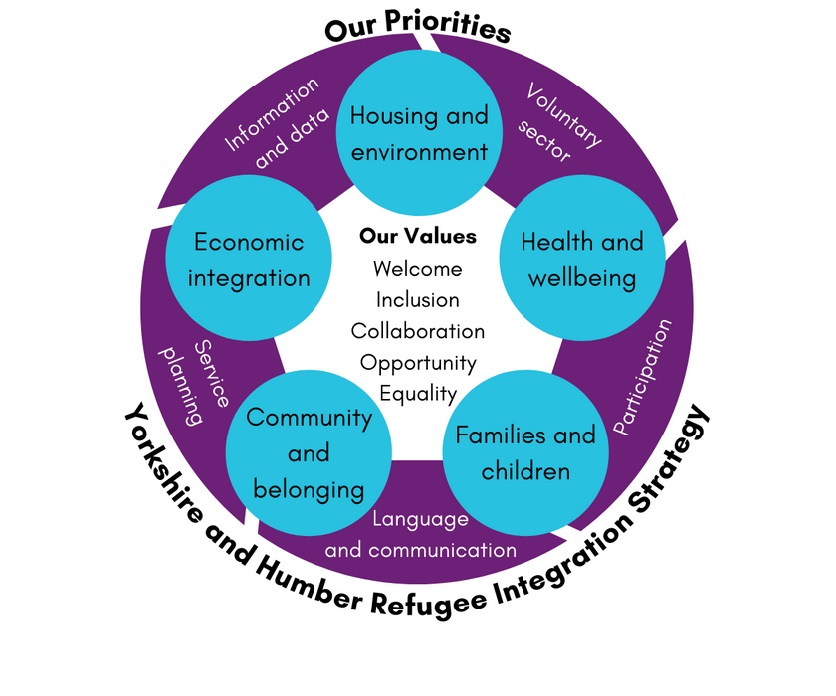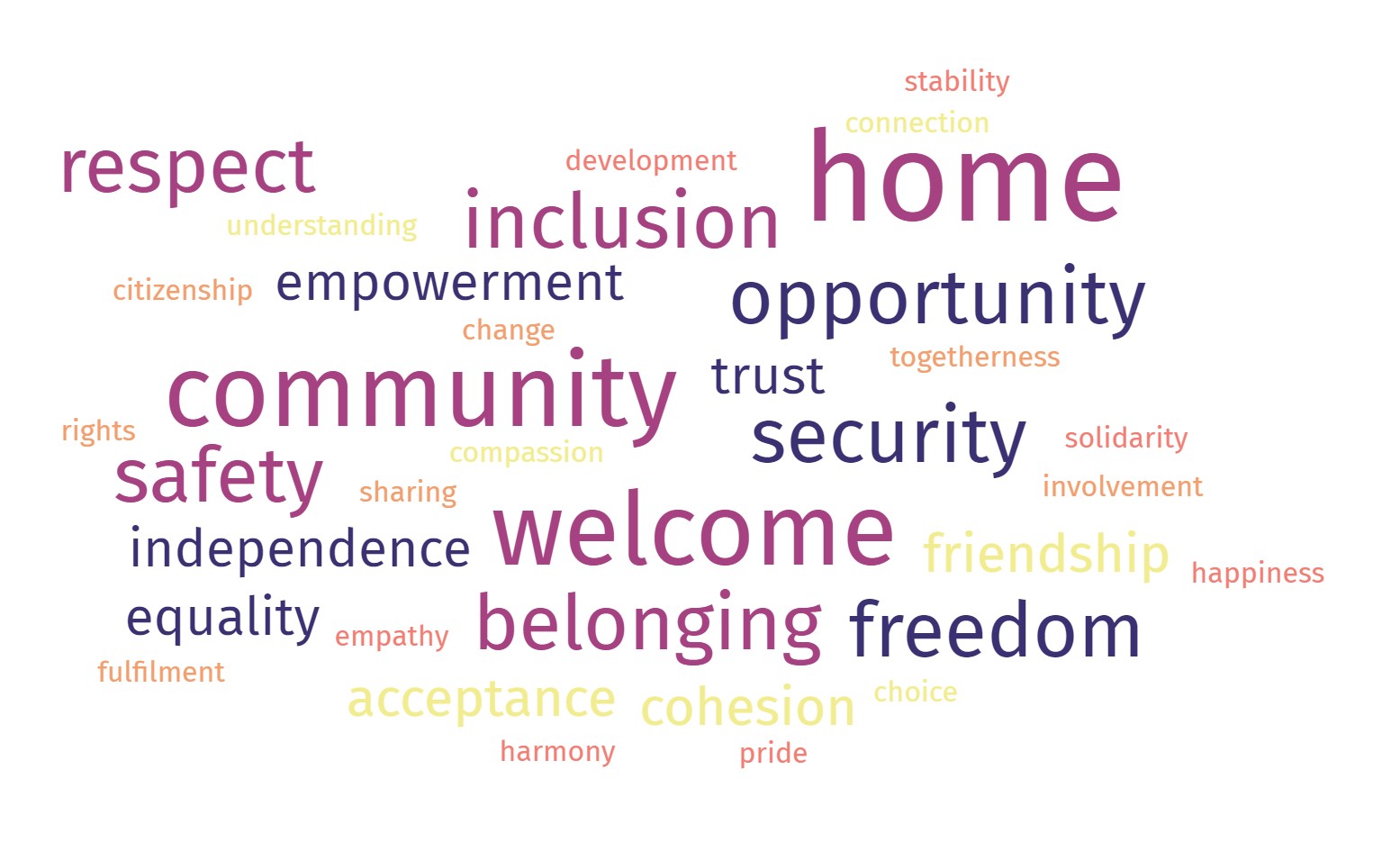Strategic priorities
Table of contents
Strategic priorities

Refugee integration is a complex, multi-faceted process. At its most basic level, it involves the rebuilding of entire lives in a new country. Older notions that put the burden of integration on newcomers have long been replaced by more nuanced and complex concepts that see integration as a two-way process, with all stakeholders having a degree of responsibility to enable it. However, integration remains a controversial concept, with definitions often based on the expectations of nation-states and other powerful stakeholders.
When asked about what integration means to then, stakeholders in Yorkshire and Humber, including those with lived experience of forced displacement, responded with a diverse set of ideas, including belonging, community, independence, empowerment, equality, choice, connection, respect, compassion, trust, understanding, acceptance, inclusion, cohesion, togetherness, welcome, citizenship, home, safety, security, rights, change, sharing, freedom, fulfilment, involvement, solidarity, development, opportunity, stability, empathy, harmony, pride, happiness, and friendship. This is what is at stake for those who live integration day to day, and this strategy reflects this rich palette of experiences.

Integration is therefore best understood as an everyday, multi-faceted, non-linear, and highly individualised process of change for all involved in the settlement of refugees and asylum seekers, including services and local communities. There is no single journey or standardised set of outcomes. Furthermore, integration is essentially a local process. A regional strategy must not substitute for local ones. Instead, this strategy provides a framework for understanding the key barriers, service gaps and priorities for refugee integration in the region. Different areas have developed local integration and/or migration strategies, and this regional strategy is meant to complement and support them.
The strategy is built upon five strategic integration areas (housing and environment; economic integration; health and wellbeing; community and belonging; and families and children) and five cross-cutting strategic integration themes (language and communication; information and data; service planning and provision; the voluntary and community sector; and participation). Five priorities are identified within each area or theme. All aspects of integration - the cross-cutting themes in particular - should be considered by everyone who works with and/or supports refugees and asylum seekers. This strategy invites stakeholders to cross professional and organisational boundaries and take a more holistic and collaborative perspective on refugee integration. There is an ongoing realisation that working in silos limits the positive impacts of integration work, and that successful refugee integration requires more integration between different service areas, sectors and localities.
Additionally, the strategy recognises that different aspects will apply to people with different types of immigration status. The UK legal and policy framework has created different routes and support systems that impact the integration of refugees and asylum seekers in varying ways. The strategy sometimes uses the terms interchangeably, but, wherever possible, strategic priorities and outcomes should apply to all those affected by forced displacement.
Beyond asylum or immigration status and eligibilities, the strategy also invites stakeholders to look different groups of refugees who have specific needs and often experience additional barriers to integration as a result of marginalisation and discrimination, such as women, people with disabilities, and LGBTQI+. On occasion, the strategy highlights issues that affect these groups, but stakeholders should always consider each area or theme from the perspective of different groups of refugees.
Finally, this strategy has two underlying issues that help give it cohesion, and which lend it its title: making connections and building resilience. There is consistent recognition of the positive impact the relationships and social connections have on the integration process, including in employment, health and learning English. These connections help refugees feel safer and fulfil their aspirations. Secondly, following the impacts of the Covid-19 pandemic, and the ever-increasing 'hostile environment' towards migration in the UK (including new limitations on rights), refugee integration more than ever necessitates greater levels of resilience at the personal, community, and organisation levels. All strategic priorities included here should be considered in terms of the opportunities that they provide to make connections and build resilience.
